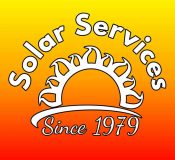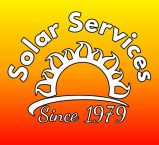Switching to solar energy is one of the most rewarding upgrades you can make to your home or business. It’s not just about slashing your electricity bills—it’s about gaining greater energy independence and contributing to a cleaner, more sustainable future. The Central Coast’s abundant sunshine makes the region well-suited for solar power, but there are key considerations to be aware of before installation begins.
This guide outlines what you should know ahead of time—from assessing your property to understanding finance options and future-proofing your investment. Let’s break it down.
Assessing Your Property’s Solar Potential
Before installing a solar power system, it’s essential to evaluate whether your property can support efficient solar generation. Not every roof is ideal, and your installer will typically conduct a site assessment to check for feasibility and performance potential.
Factors considered in this process include:
- Roof orientation & tilt: North-facing panels provide optimal output, but east-west alignments can still deliver strong performance depending on your daily usage pattern.
- Shading: Trees, chimneys, antennas and neighbouring buildings can reduce sunlight exposure and affect output.
- Roof space & structure: The available area should be clear, stable, and free from major obstructions.
- Roof condition: If your roof needs repairs or is nearing the end of its life, it’s best to address that before installing panels.
Choosing the Right Solar System for Your Needs
Solar systems aren’t one-size-fits-all. The right configuration depends on how much energy you use when you use it and whether you want battery storage or just a grid connection.
Common options include:
- Grid-connected systems: The most popular choice, allowing you to feed excess electricity back to the grid for credits via feed-in tariffs.
- Hybrid systems: These include a battery that stores surplus power for later use, giving you greater control over your energy.
- Off-grid systems: Designed for remote locations, these are self-sufficient and require robust battery storage to function without grid support.
Understanding Your Current Energy Usage
Evaluating your household or commercial power consumption is crucial before any system is installed. This data allows your solar provider to recommend a system that aligns with your usage habits.
Here’s how understanding your usage helps:
- Allows precise sizing to avoid over-capitalising on too many panels
- Helps maximise efficiency and returns based on your peak usage times
- Highlights opportunities to pair solar with batteries or energy monitoring tools
- Solar experts often analyse your energy bills for the past 12 months, factoring in your daily routines and any future changes, like EV charging.
Navigating Government Incentives & Rebates
Solar installations in Australia are supported by generous federal and state incentives, helping reduce the upfront cost of panels and batteries. Navigating these options is much easier with a reputable installer by your side.
Available financial support includes:
- Small-scale Technology Certificates (STCs): Based on system size and location, these act as a point-of-sale discount.
- Feed-in tariffs (FiTs): You’ll receive credits on your bill for any unused power sent back to the grid.
- State-specific rebates or interest-free loans: Some areas offer additional assistance to encourage uptake.
Working with Accredited Solar Installers
Installation quality plays a huge role in the reliability and longevity of your system. It’s important to work with a Clean Energy Council (CEC) accredited installer who complies with national standards and industry best practices.
When choosing your solar installer, check for:
- Valid CEC accreditation (both the business & installer)
- Strong customer reviews & a portfolio of local projects
- Transparency around installation processes, products & warranties
- Availability of ongoing support or system monitoring services
A good installer will not just mount your panels—they will help optimise the system and support you post-installation.
Evaluating Product Warranties & System Longevity
Investing in a solar system is a long-term commitment, often with the expectation that it will provide reliable energy for 20 years or more. To protect your investment, it’s essential to choose products that are backed by strong warranties and to understand the coverage terms offered.
Key warranty categories to consider:
- Solar panels: Often include separate warranties for product quality and long-term performance, with coverage commonly ranging from 10 to 25 years.
- Inverters: Typically covered for 5 to 10 years, depending on the manufacturer and model.
- Batteries: Warranty terms vary based on usage cycles and storage capacity but often fall between 5 to 10 years.
- Installation or workmanship: Many providers offer additional guarantees on the quality of the installation work, which may range from a few years to a decade.
It’s also important to check how warranty claims are handled and whether support is available locally through your installer or supplier. Opting for well-established products with proven durability can help ensure your system remains dependable well into the future.
Exploring Finance Options for Solar Power
While the upfront cost of solar has dropped significantly in recent years, it still represents a financial commitment. Fortunately, there are several ways to make solar more accessible without paying the full amount upfront.
Popular solar finance options include:
- Green loans: Offered by banks and credit unions with competitive rates.
- Buy Now, Pay Later schemes: Break the cost into instalments over 12–60 months.
- Power Purchase Agreements (PPAs): Under these, you pay only for the electricity generated while a third party owns and maintains the system.
Planning for Future Energy Needs
Investing in solar is a forward-thinking move, and it’s wise to consider how your energy usage may grow over time. Whether you’re adding a home office, buying an EV, or planning to electrify your home, your system should be scalable.
Think about future-proofing by:
- Choosing an inverter that supports future panel expansion.
- Including battery-ready components for later storage add-ons.
- Positioning panels to leave room for additional arrays.
- Integrating EV charging stations or heat pump compatibility.
Planning ahead ensures your solar system remains a valuable asset for years.
Make the Switch to Solar Power on the Central Coast Today
At Solar Services Central Coast, we make solar simple—from design and finance to installation and aftercare. We provide trusted solar panel installation across the Central Coast, helping homeowners and businesses transition to clean, renewable energy solutions. Our systems are built for long-term savings, and we only use Clean Energy Council-approved products and certified professionals.








